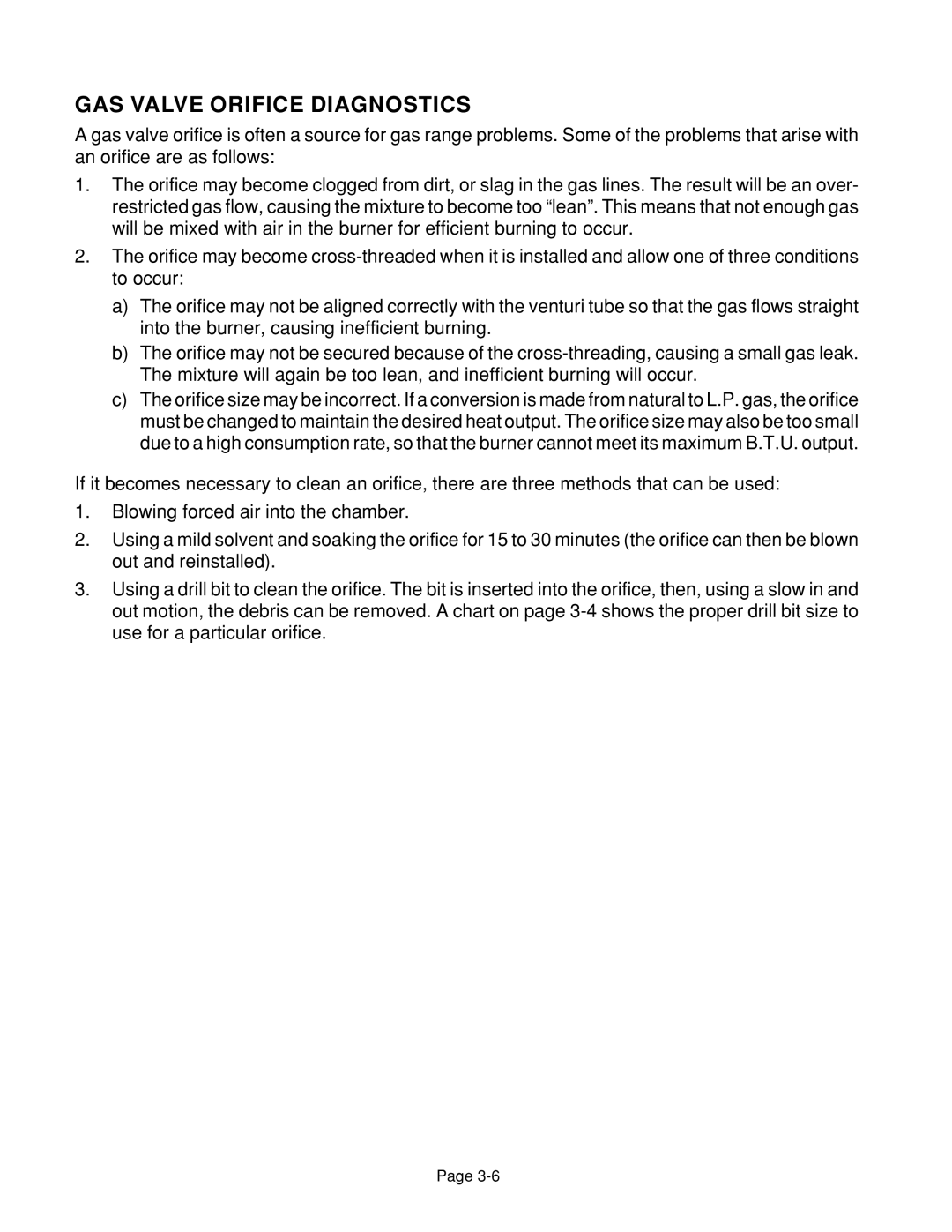GAS VALVE ORIFICE DIAGNOSTICS
A gas valve orifice is often a source for gas range problems. Some of the problems that arise with an orifice are as follows:
1.The orifice may become clogged from dirt, or slag in the gas lines. The result will be an over- restricted gas flow, causing the mixture to become too “lean”. This means that not enough gas will be mixed with air in the burner for efficient burning to occur.
2.The orifice may become
a)The orifice may not be aligned correctly with the venturi tube so that the gas flows straight into the burner, causing inefficient burning.
b)The orifice may not be secured because of the
c)The orifice size may be incorrect. If a conversion is made from natural to L.P. gas, the orifice must be changed to maintain the desired heat output. The orifice size may also be too small due to a high consumption rate, so that the burner cannot meet its maximum B.T.U. output.
If it becomes necessary to clean an orifice, there are three methods that can be used:
1.Blowing forced air into the chamber.
2.Using a mild solvent and soaking the orifice for 15 to 30 minutes (the orifice can then be blown out and reinstalled).
3.Using a drill bit to clean the orifice. The bit is inserted into the orifice, then, using a slow in and out motion, the debris can be removed. A chart on page
Page
